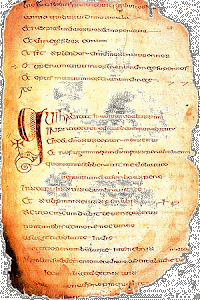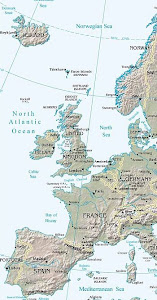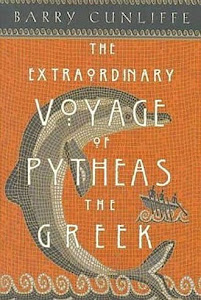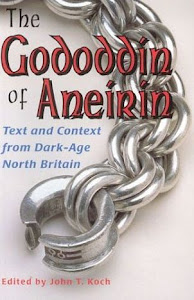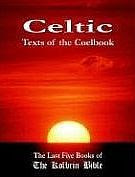 Last time, I concluded by mentioning an account of early British priests attending a “Hyperborean” style ceremony, saying that explanation of this would have to wait till next post. The source for this, and other related references to the arrival of Christianity in pre-Roman Britain is a controversial one, part of the so-called Celtic Coelbook alias The Gospel Of The Kailedy, which is itself part of a larger 11-book compendium called The Kolbrin. The compendium has been nicknamed “the Kolbrin Bible,” a term repudiated as inaccurate by the copyright owners, two obscure Christian sects, the Hope Trust and now the Culdian Trust.
Last time, I concluded by mentioning an account of early British priests attending a “Hyperborean” style ceremony, saying that explanation of this would have to wait till next post. The source for this, and other related references to the arrival of Christianity in pre-Roman Britain is a controversial one, part of the so-called Celtic Coelbook alias The Gospel Of The Kailedy, which is itself part of a larger 11-book compendium called The Kolbrin. The compendium has been nicknamed “the Kolbrin Bible,” a term repudiated as inaccurate by the copyright owners, two obscure Christian sects, the Hope Trust and now the Culdian Trust.(One of the sources given in the text is “old Culdee books” – the Culdees being an obscure early hermit-like Celtic monastic order).
But it is understandable in view of the wide-ranging nature of the work, which includes material it claims was brought from the Mid-East by Phoenician tin-traders when they established an enclave near Glastonbury Abbey, where the book was kept till the disastrous 1184 fire. The various episodes in the compendium go from the early Christian Era back to perhaps 3,000 BC. It includes an account of a periodic cosmic catastrophe, known as the Frightener or Destroyer, which engulfs the Earth around every five thousand years. This has been picked up on by various fundamentalist, survivalist, conspiracy and doomsday websites as proof we are now living in the End Times. The Kolbrin also includes what we might call an alternative view of events described in the New Testament, with a personal description of you-know-who, as someone whose mother Mary thought was a ‘tardy breadwinner’ and whose male relatives wanted put away as a mental case.
In view of its contents, lack of a public pedigree, and promotion by alternative, conspiracy and New Age websites, it’s not surprising that the entire book is usually dismissed by both the scientific and church establishments as alarmist, sensational, and ‘obviously’ a modern hoax. Even a Wikipedia page on the Kolbrin was apparently taken down last winter almost as soon as it was put up. Still online is the reasoning behind this, where the page censors argue it is a “non-notable fringe theory” which doesn’t even deserve to be listed as controversial, on the grounds everyone considers it a hoax anyway - and may be part of a larger conspiracy by those Dan Brown villains, the Illuminati. (If you want an insight into the Wikipedia controller-mindset these days, the final version of the behind-the-scenes argument is here. An earlier version with the suggestion the book is probably part of an Illuminati, Masonic, Rosicrucian, or Druid conspiracy is archived here.)
The it’s-all-a-hoax view no doubt has the appeal of letting its believers sleep better at night. The actual evidence cited that it’s a modern hoax is first, the external evidence that it appeared only recently in the public domain, after being hidden away for centuries. And the text says the material was preserved over the centuries partly carved on wooden plaques and partly inscribed on bronze or copper plates (like printing plates) – which sceptics claim were virtually unknown methods of recording, so this must be an invention. Ergo, it is not only pseudepigrapha (i.e. the authorship is not as claimed), it isn’t even real pseudepigrapha [!], but a complete forgery, a hoax ‘ancient’ manuscript.

Secondly, internal evidence is also cited, mainly a passing reference in the Trust’s own introduction, which claims the Trust members who conserved the books were simple folk with no historical expertise. The introduction inadvertently then substantiates this when it apparently confuses various attempts at suppression or destruction of monastic manuscripts between the 12th (the Glastonbury Abbey ‘arson’ of 1184) and the 16th centuries (the Dissolution of the Monasteries). This careless conflation has been cited as proof the entire work is that of a modern master forger - who nonetheless made mistakes anyone today could have avoided using a school history book listing the reigns of the kings of England. The logic of this frankly escapes me - it isn’t even part of the original book. But there are other quibbles about actual text references, and the dismissive view has been accepted without question so widely that I intend to proceed cautiously, looking at the external evidence (its provenance etc) first, and then the internal evidence (what the work actually says) separately.
The book is not well-known partly as it’s not been that easy to access since it surfaced in 1995. Only portions of it have appeared online, on a copyright-protected website that prevents users from right-clicking to copy portions of text. Despite the Wikipedia censorship argument the book probably does not even physically exist, being merely a website hoax, printed editions of the complete work have been available for several years, originally in a huge, expensive edition - 443 pages with gold inlay, then in 2006 in a slightly cheaper ‘scholars’ edition with wide margins for making notes in. (It’s that kind of work.) A pair of more accessible large-format paperbacks with the Celtic and “Egyptian” material split up are also now available, along with an e-books edition of all three. (Right-click here to download a 44-page large-print sample in PDF format from the US publisher’s website, containing the preface and first chapter of the Coelbook.) My copy of the 200-pp large-format paperback (£11.53 on Amazon UK) with the 5-book British material finally arrived yesterday after some delay (due to its going out of stock almost at once). I’ll review it when I’ve had a chance to look it over. For anyone who wants to try to get hold of a copy of the Celtic-British half of this old book to make up their own minds in the meantime, here is the Amazon-UK link: Celtic Texts Of The Coelbook.
